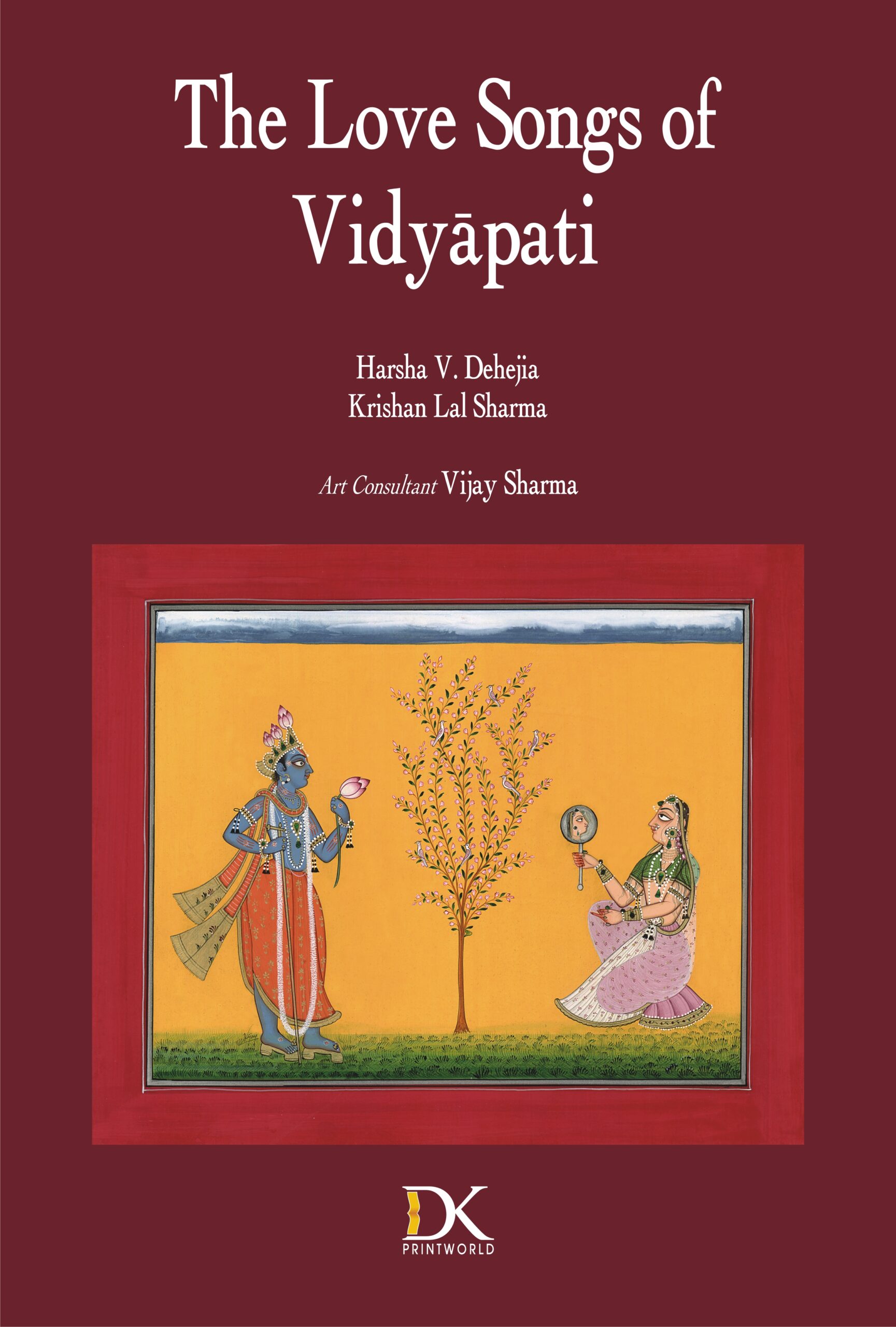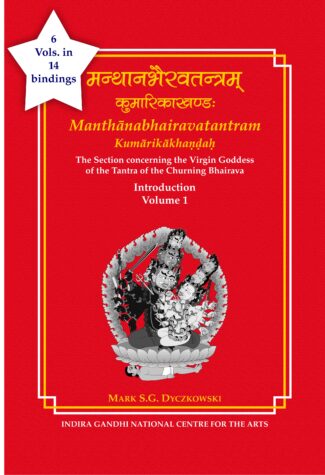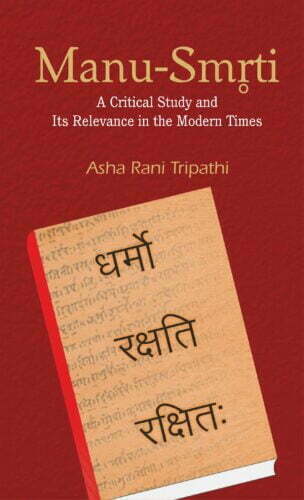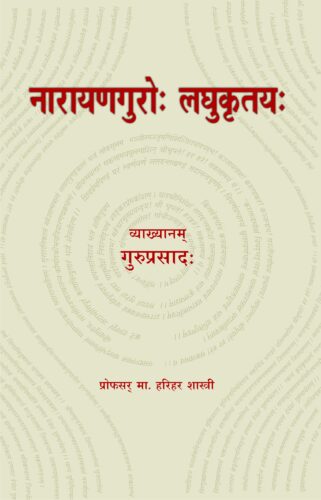Showing 61–70 of 143 results

Love Songs of Rasakhan is one among the numerous works of medieval Muslim Vaishnava poets. His original name was Said Ibrahim. On seeing a picture of Shrinathji, Said Ibrahim instantly fell in love with Krishna. His love for Krishna made him yearn for a vision of Krishna.
Love Songs of Rasakhan is one among the numerous works of medieval Muslim Vaishnava poets. A sixteenth-century poet, Rasakhan was born in a Pathan Muslim family at Pihani in Uttar Pradesh. His original name was Said Ibrahim. On seeing a picture of Shrinathji, Said Ibrahim instantly fell in love with Krishna. His love for Krishna made him yearn for a vision of Krishna. He stayed with Krishna devotees in Braj, but could not get a vision of Krishna. He unsuccessfully tried his luck at the Gopalpura Shrinathji Temple and finally went to Govindkund and lay there three days without food and water. Pleased, Shrinathji gave him darshan and this made him to move on the Pushtimarg with the guidance of Gosain Vittalnath.
He spent his entire life in Brij composing songs of the many lilas of Radha and Krishna with the pen-name, Rasakhan. Touched by the sensuality of the love of Radha and Krishna, he produced many mellifluous and melodic songs, celebrating their love.
Other than his poetic genuis, this bilingual illustrated volume contains the stories of 252 Vaishnavas, articles on Rasakhan: A Poet and His Poetry; Medieval Muslim Vaishnava Poets; Rasakhan and the Fluidity of Identity; The Mind of Rasakhan; Muslim Vaishnavas of Bengal; and Poets, Painters & Patrons, being Krishnalal Sharma; Narmada Prasad Upadhyaya; Vidya Rao; Harsha V. Dehejia; Sumanta Banerji; and Harsha V. Dehejia as respective authors.

This portfolio, based on the ten Maithili love songs of Vidyapati, presents lovely paintings on the varied love moods of Radha: her sensuous charm, innocence, longing for Krishna, surrender to love, etc.
Vidyapati (c. 13521448), called second Jayadeva in his lifetime, is immersed, charged and inspired by the love of Radha and Krishna. He wrote emotionally-intensive love songs in Maithili, for the queens of Shiva Simha, his patron, and the common folk. Though drawn inspiration from Jayadeva, more than him, Vidyapati presents in his poetry a rare, tender and sensitive understanding of Radhas psyche. In his love songs Radha, not Krishna, is in the centre stage and through his nayika Vidyapati is reaching out to each and every woman in Mithila.
Vidyapati presents his songs from a womans heart, and describes his nayikas slowly awakening youth, her sensuous beauty, her coyish charm, her naïve innocence, her surrender to love and her anguish on being neglected. She is invariably sensual, spiritual, physical and emotional. Though she did not inspire painters of the time, she ruled the hearts of the people of Mithila. Vidyapatis love songs are written in honeyed words and are sung with mellifluous notes in homes, fields, chowks and havelis, across eastern India. And thus he still rules their heart.
This portfolio, based on the ten love songs of Vidyapati, presents lovely paintings on the varied love moods of Radha, the love queen. In doing so, different artists have displayed their dexterity in Jaipur, Caurapancashika, late Mughal, Manaku, Kishangarh, Jain, Kangra and Basohli styles.
The Madhuravijayam (Sanskrit: मधुराविजयम्), meaning “The Victory of Madurai”, is a fourteenth-century CE Sanskrit poem written by the poet Gangadevi. It is also named the Vīra Kamparaya Caritam by the poet. Gangadevi, also known as Gangambika, was a poetess in the Vijayanagara Empire during the fourteenth century and chronicled the story of the victory of her husband, Kumara Kampana, son of Bukka Raya I, over the Muslims in Madurai, in the form of a poem. The poem celebrates the victory of the Vijayanagara Empire’s crown prince, Kamparaya, over Madurai. In addition to battle scenes a wash with blood, gore and plenty of poetic fantasy, the poetess describes how her husband Kampa passes the time between wars with his multitude of beautiful wives.
This edition is prepared to highlight that it is composed by a woman and it is the first woman writing in Sanskrit recognized by scholars and comprises of the original Sanskrit text with a new English translation. It forms the 4th volume under the series: Women Writings in Sanskrit Literature. The historical value of this work is discussed along with the introduction of this work. The authoress, instead of drawing the subject matter from the well-known Puranas (as is usual with the generality of Sanskrit poets), has chosen the biography of her royal consort as fit subject to exhibit her remarkable poetical talents.
The work is in the form of a classical kavya conforming to the rules laid down in the treatises on poetics and contains the usual lengthy description of the seasons, the twilight, the rising of the moon and other necessary topics. The authoress writes in the Vaidarbhi style.

The book discusses the main concepts of management that are to be found in Sanskrit literature, and attempts to study the usefulness of those Indian traditional values and principles in the formulation and adoption of modern-day management techniques a very useful book for scholars and students.
India has been known for long as the land of spirituality. Recent studies have brought out the depth of secular wisdom that is also embedded in the ancient Vedic and classical literature. Management Mantras is an attempt to bring about a synthesis between a modern subject like Management and one of the most ancient literatures of the world. In the words of Swami Mukundanandaji who has written the foreword, This book is like a treasure house of centuries of wisdom from the ancient Indian civilization speaking to us on the theme of Management Science. Whether one is questing for tips to hone ones managerial acumen, or searching for gems of practical wisdom in life, or merely an admirer of the Vedic culture, there is enough material in it to satisfy everyone.
The book touches upon all aspects of Management like Decision Making, Human Resource Development, Organizational Behaviour and Social Responsibility in 12 chapters. The discussions in each chapter are logically organized setting forth the principles of management at the outset, followed by corresponding references from texts like Arthasastra.
It is hoped that the book will interest scholars and students of Management and will be a useful addition to Libraries in Management schools as well as Humanities and Language Departments of Colleges and Universities.

The 24,000 verses long Manthanabhairavatantra is the most important and extensive Tantra dedicated to the goddess Kubjika who is exclusively worshipped in the Kathmandu Valley. The section, Kumarikakhanda, offered here in 14 volumes, presents Kubjikas unique historical importance in the extraordinary richness of the inner, spiritual dimensions of her cult.
The Manthanabhairavatantra is about 24,000 verses long and is divided into three sections (khanda). The one edited and translated here is the Kumarikakhanda. Along with the Kubjikamata, the Manthanabhairavatantra is the most important and extensive Tantra dedicated to the worship of the goddess Kubjika. Although originally an Indian goddess, Kubjika is almost exclusively worshipped in the Kathmandu Valley, where her cult has been kept scrupulously secret by Newar initiates for centuries. Almost all the manuscripts of her Tantras and related literature have been found there.
Kubjika is a powerful development of Malini, the principal goddess of the Trika Tantras and Kali of the Kashmiri Krama tradition. Her cult belongs to a chain of early Kaula systems that culminate with that of the goddess Tripura and so sheds considerable light on them. Kubjikas unique historical importance is mirrored in the extraordinary richness of the inner, spiritual dimensions of her cult. These are explored in detail in the introduction to the edition and translation of the text with extensive references from mostly unpublished Kubjika Tantras and those of related schools.
The work took close to two decades to produce. In this time numerous working editions of unpublished Tantras and related texts were prepared by the author with the help of a team of five trained assistants.

The present book is an effort to bring together all scattered materials related to different topics contained in Manu-Smriti. The book also aims to diffuse many of the doubts related to certain topics contained in Manu-Smriti, such as status of brahmana, shudra and woman.
Manu-Smriti is one of the most coveted and popular works of ancient India. It comprises codes that are needed for an ideal, peaceful and harmonious society. The entire Manu-Smriti revolves around the Vedic concept of rita or dharma. The concepts of purusharthas, ashramas and varnas have their roots in dharma. These concepts were meant to make the life of every member of the society fruitful and purposeful. The codes prescribed by Manu became an authority on ancient laws and were put in practice. The scholars working in different fields of sociology, religion, philosophy, ethics, ancient laws and politics are bound to consult Manu-Smriti for some reason or the other.
The present book is an effort to bring together all scattered materials related to different topics contained in Manu-Smriti. The book also aims to diffuse many of the doubts related to certain topics contained in Manu-Smriti, for example, status of brahmana, shudra and woman. The analysis of topics such as human values, raja-dharma and Manus codes on crime and punishment has been presented in this book in a lucid style. All these topics bear great relevance even in modern times. The volume tries to maintain the originality of Manus concepts through rational and honest approach. The book also includes few modern subjects like economics, ecosystem management and biodiversity conservation that have been dealt by Manu in a scientific manner.
This book will benefit all those who want to know about the rules and practices that governed our ancient history, pertaining to all the aspects of human life.
“प्रस्तुत ग्रन्थ प्राचीन भारतीय मूल्य एवं दर्शन शृंखला के द्वितीय भाग है। मनुस्मृति प्राचीन भारतीय धर्मशास्त्र परम्परा का आधारभूत ग्रन्थ है। भारत का प्राचीन धार्मिक इतिहास सामाजिक संरचना, राजनीतिक मान्यताओं इस ग्रन्थ में जो प्रतिनिधिक वर्णन मिलता है।
मनुस्मृति मूल रूप से आध्यात्मिक मान्यता परक ग्रन्थ रहा, जिसमें कालक्रमः से समाज.व्यवस्था, वर्णव्यवस्था एवं अनेकानेक बातें समाहित होती चली गईं। तथापि मनुस्मृति की सर्वोपरिता आर्यवर्त में सहसीरों वर्ष तक निर्विवाद रही। धर्म, कर्म, कर्तव्य, सूतक, प्रायश्चित्त एवं संस्कार आदि के लिए आज भी स्रोत ग्रन्थ के रूप में मनुस्मृति संदर्भ ग्रन्थ है।”

In this critical interpretation of Upanisad the author looks afresh at some puzzling questions like; What is the nature of Brahman, the one Casual Reality? How can a seeker know it? Who can be eligible for its knowledge?
India has millennia-long tradition of spirituality and metaphysical thought. In its worldview, the Absolute/Supreme Reality defies all verbal descriptions though it is visualizable in countless ways. The Upanishads, accordingly, are diverse expressions of the one vision of this very Reality. The Mundaka, however, holds a special place in the writings of the genre: not because of its emphasis on shraddha (belief) often in ones guru, but primarily for its vehement denunciation of the Vedic ritualism. Which perhaps explains why sannyasins (the renunciate monks) treat this Upanishad as a spiritual authority for the way of life they have chosen to live. Here is a brilliant, critical interpretation in contemporary idiom of the Mundaka Upanishad, showing how a seeker can cogitate/meditate upon the Supreme Reality or, in other words, how one can have the transcendental experience of cosmic Consciousness. The book looks afresh at some of the perpetually puzzling questions that Mundaka addresses questions, like for instance: What is the nature of Brahman, the one Casual Reality? How can a seeker know it? Who can be eligible for its knowledge? Offering an indepth, analytical commentary on this time-honoured text, Swami Muni Narayana Prasad presents at once appropriate metaphors, analogies and, these besides, backgrounds to the varying contexts that not only elucidate various philosophical terms and concepts in all their underlying shades of meanings, but also provides rich insights into this Upanishad. Complete with the original Sanskrit text and its Roman transliteration, this work is a must for all keen on discovering the essential meaning of the Upanishadic thought and meditating upon wisdoms ineffable core.

Smrtis, in Indian spiritual lore denote the class of canonical texts that teach traditional laws, civil or religious. Such laws need periodical revision or modification, or even total nullifying and replacement. Narayana Guru took up the challenge to write Narayana Smrti an alternative new text fit for current times when he felt that the two-thousand-years old Manusmrti has became outdated.
Smritis, in Indian spiritual lore, denote the class of canonical texts that teach traditional laws, civil or religious, as against shrutis that reveal the eternal Reality. Such laws, as is to be presumed, need periodical revision or modification, or even total nullifying and replacement. Narayana Guru took up the challenge to write a new Smriti text when he felt that the two-thousand-years old Manusmriti has became outdated for modern times. Narayana Smriti is an alternative new text fit for current times while being fully in conformity with the traditional wisdom, espoused in Indian literature.

The book written in Sanskrit with original verses, provides details of shorter works of Narayana Guru, a great poet of southern India. Comprising 17 chapters, it highlights his anthologies in praise of Lords Ganapati, Subrahmanya, Siva, Visnu, etc.
The book written in Sanskrit with original verses, provides details of shorter works of Narayana Guru, a great poet of southern India. Comprising 17 chapters, it highlights his anthologies in praise of Lords Ganapati, Subrahmanya, Siva, Visnu, etc.
| There are no products |